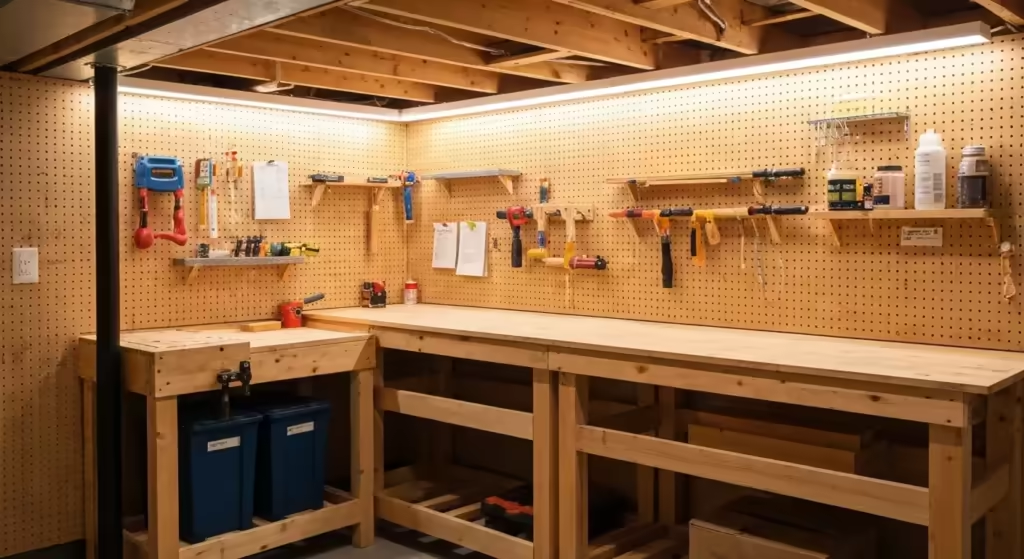My husband, John, and I had always been planners. We planned for our careers, our children’s education, and what we thought was a comfortable retirement. We pictured leisurely travel, time with our future grandchildren, and the simple peace of not having to watch every penny. But life, as it often does, had a different plan for us. A sudden and severe market downturn, coupled with an unexpected health crisis, took a massive bite out of our nest egg. The comfortable retirement we’d spent decades building vanished, replaced by a stark and terrifying new reality.
Panic was my constant companion in those first few months. The simple act of grocery shopping became a source of anxiety. I’d walk the aisles of stores I once browsed without a second thought, my heart pounding as I calculated the cost of every item. The freedom of financial security was gone, and in its place was the heavy weight of a budget so tight it felt suffocating.
I realized that if we were going to make it, and not just survive but actually live, I had to change my entire relationship with money. I couldn’t control the stock market, but I could control our spending. I decided I wasn’t going to be a passive consumer anymore, a victim of clever marketing and full-price temptations. I was going to become a student of savings, a detective of discounts. This journey, born of necessity, led me down a rabbit hole of retail secrets and markdown calendars. What I discovered didn’t just save us money; it gave me a sense of control and empowerment I thought I had lost forever. This is my story, the lessons I learned one markdown at a time.
-
My First Painful Lesson: The Humiliation of a Full-Price Shopping Trip
The moment our new reality truly hit me wasn’t when our financial advisor delivered the bad news. It was a few weeks later, on a Tuesday afternoon at a department store I had frequented for years. Our favorite coffee maker, a trusty companion for the last decade, had finally given up. It felt like a small, final insult in a string of much larger ones.
I walked into the store with a sense of dread. Before our financial crisis, I would have marched straight to the kitchenware section, picked out the newest model of our preferred brand, and paid without looking at the price tag. But that day, every price tag seemed to scream at me. The model I wanted was $120. My mind raced. One hundred and twenty dollars. That was a significant portion of our new, brutally lean weekly budget for groceries and all other necessities.
I stood there for what felt like an eternity, holding the box. I felt a hot flush of embarrassment, my cheeks burning. I imagined other shoppers could see my internal turmoil, that my financial strain was written all over my face. I looked at cheaper models, but they felt flimsy and unfamiliar. Defeated, I put the expensive coffee maker back on the shelf and walked out of the store empty-handed, fighting back tears. I drove home and made instant coffee with water boiled on the stove, and it tasted like failure.
That evening, I didn’t just feel sad; I felt angry. I was angry at our situation, but I was also angry at myself for being so helpless. I had let a price tag defeat me. Right then and there, staring into my mug of bitter instant coffee, I made a promise to myself. I would never let that happen again. I wouldn’t just hope for sales; I would hunt them. I wouldn’t be a passive victim of retail pricing; I would learn the system. This humiliating experience was the painful catalyst I needed. It was the moment I stopped mourning my old life and started building a new, smarter one. The lesson wasn’t about the coffee maker; it was about taking back control. My mission had begun.
-
Cracking the Holiday Code: My First Major Breakthrough
My new mission began in earnest after that miserable coffee maker incident. I started small, clipping coupons and diligently checking weekly flyers. But my first earth-shattering discovery, the one that truly opened my eyes to the world of markdown calendars, happened by pure chance the week after Christmas.
We needed batteries, of all things. I went to a large chain drugstore, expecting to run in and out. But as I walked in, I was greeted by a sea of red and green signs: “HOLIDAY CLEARANCE: 75% OFF.” I was intrigued. I had always known things went on sale after Christmas, but I’d never paid it much attention. This time, I walked through the aisles with purpose.
It was like finding a hidden treasure. Beautiful rolls of wrapping paper, originally $8, were now $2. Boxes of high-quality Christmas cards were marked down to a pittance. I saw gift sets—lotions, candles, gourmet food baskets—that would make perfect birthday presents throughout the year, all for a quarter of their original price. A lightbulb didn’t just go on in my head; it felt like a stadium floodlight.
I bought two years’ worth of wrapping paper, ribbons, and gift bags. I bought a dozen boxes of cards. I found a beautiful, festive serving platter, originally $40, for just $10. I even found a pre-lit artificial wreath that was far nicer than our old one, reduced from $60 to $15. I spent about $50 in total, but I walked out of that store with goods that would have cost me $200 just a week earlier. I felt a rush of adrenaline, a sense of victory that was the complete opposite of the shame I’d felt in the department store.
That night, I sat down at our kitchen table with a plain notebook. I labeled the first page “Markdown Calendar.” At the top, I wrote, “December 26th: Post-Christmas Clearance. 50-75% off.” I then started thinking about other holidays. What about Valentine’s Day? Easter? The Fourth of July? I realized that retailers had to get rid of seasonal inventory to make room for the next big thing. My job was simply to be there when they did.
This was my first concrete strategy. It wasn’t just about saving money anymore; it was a game, and I was learning the rules. I learned to think a year ahead. That day, I wasn’t just buying cheap Christmas supplies; I was buying peace of mind for the following year, knowing I wouldn’t have to face those full-price holiday costs on our tight budget. It was my first major win, and it gave me the confidence to dig deeper into the retail secrets I was sure were waiting to be found.
-
Learning the Retail Seasons: Why You Buy a Winter Coat in March
My success with post-holiday sales fueled my determination. My little notebook was starting to fill up with observations. I began to understand that the retail world operates on its own, completely illogical calendar that has very little to do with the actual weather outside. Learning this rhythm was my next critical lesson.
My first experience with this was with a winter coat. My old one was threadbare, and I desperately needed a replacement. It was late November, the air was getting crisp, and logically, it was the perfect time to buy a coat. I went to the mall and was met with sticker shock all over again. The new arrivals were beautiful, warm, and astronomically expensive. I saw a coat I loved, but its $250 price tag was unthinkable.
I remembered my holiday clearance victory and decided to wait. It was a cold winter, and I made do by layering sweaters under my old, worn-out coat. I felt a pang of self-pity every time I bundled up, but I held firm to my new resolve. I watched that coat. I visited the store in January, and it was marked down by 25%. A good start, but I had a feeling it would go lower. In February, it dropped to 40% off. I was tempted, so tempted, to buy it then. My hands were always cold, and my patience was wearing thin.
But I had started to notice a pattern. The store was already putting out racks of pastel-colored spring jackets and lightweight sweaters. They needed to get rid of the bulky winter inventory. I decided to gamble and wait a little longer. Finally, in the first week of March, with a few rogue snowflakes still falling outside, I walked in and saw it. A final clearance rack. And there was my coat. It was the last one in my size. The original $250 tag had a bright red sticker on it: $75. I practically ran to the register.
Wearing that warm, new coat home, I felt brilliant. I had outsmarted the system. This experience solidified a new chapter in my markdown calendar. I started mapping it out:
- Winter Gear (Coats, Boots, Gloves): Best prices in late February and March.
- Swimsuits & Summer Apparel: Retailers start putting these out in February! The best time to buy is August and September when they’re desperate for space for fall clothing.
- Patio Furniture & Grills: Don’t buy in May when everyone is thinking about Memorial Day. The deep, deep discounts happen from late August through October. I bought a beautiful patio set for 70% off on a chilly October afternoon.
- Linens & Bedding: January “White Sales” are a real thing. Department stores have been doing this for over a century to drive traffic after the holidays. It’s the absolute best time to buy sheets, towels, and comforters.
I learned to live out of sync with the world. I was buying for next winter while my neighbors were planting their spring gardens. I was shopping for next summer’s beach towels as the autumn leaves began to fall. It required planning and storage space, but the savings were astronomical. I was no longer buying things when I needed them; I was buying them when they were at their cheapest. It was a fundamental shift in mindset that changed everything.
-
The Semi-Annual Sale: A Goldmine Hiding in Plain Sight
As my confidence grew, I started noticing another pattern. It wasn’t tied to a specific holiday or season but seemed to happen twice a year, like a recurring retail tide. My first encounter with this was at a Bath & Body Works. I went in to buy a simple hand soap and walked into what felt like a frenzy. The entire store was on sale, with massive bins of products and signs promising up to 75% off.
I asked a sales associate what was going on. “It’s our Semi-Annual Sale!” she said, barely audible over the excited shoppers. “Happens every January and June.”
My ears perked up. Semi-annual. This wasn’t a random event; it was a scheduled purge. The purpose was to clear out absolutely everything from the past six months—seasonal scents, old packaging, discontinued products—to make way for the new. I watched as people filled their bags with lotions, candles, and soaps. I realized I could stock up on gifts and household staples for the next six months at a fraction of the cost.
I went home and started researching. It turned out this wasn’t unique to Bath & Body Works. Many major retailers, from clothing stores to home goods giants, had their own versions of a semi-annual sale. They might not always call it that, but the principle was the same. The two key periods were:
- Early to Mid-January: After the holiday return rush, stores need to clear out all remaining fall and holiday inventory and make space for the (absurdly early) spring collections.
- Late June to Mid-July: This is when they purge all the spring and early summer merchandise to bring in the “back to school” and fall items.
I marked these periods in my notebook with a big star. My first big test of this theory was at a major department store the following June. I had been eyeing a new set of bath towels, but the price for the quality I wanted was too high. I waited. Sure enough, in the last week of June, the “Home Sale” started. The towels I wanted were 50% off. I combined that with a store coupon I had saved, and I walked away with a luxurious set of towels for nearly 65% off the original price. The feeling was intoxicating.
These semi-annual sales became anchor points in my shopping year. I learned to keep a running list of things we needed—new pillows, kitchen gadgets, John’s favorite brand of polo shirts—and I would wait for these sales. It was the ultimate test of patience, but the payoff was immense. I was no longer just buying things on clearance; I was strategically planning my major purchases around the two most predictable and significant markdown events of the retail year. It felt like I had been given a secret map to a treasure that was hidden in plain sight the whole time.
-
The Agonizing, Rewarding Art of Resisting “New Arrivals”
Perhaps the hardest lesson for me to learn was the art of patience. It’s one thing to understand the markdown calendar intellectually; it’s another thing entirely to walk past a beautiful, full-price “new arrival” that you desperately want and force yourself to wait.
My greatest trial by fire was a gorgeous, deep blue peacoat. I saw it in a store window one crisp October day. It was perfect—the cut, the color, the quality. It was exactly what I had been wanting for years. I went inside and tried it on. It felt like it was made for me. Then I looked at the tag: $300. My heart sank. It was an impossible amount.
The old me would have either felt deprived and sad, or perhaps recklessly put it on a credit card, creating a problem for later. The new me, the student of markdowns, saw a challenge. I took a picture of the coat and the tag with my phone. I went home and wrote it down in my notebook: “Blue Peacoat, Store X, $300, October.” I told myself I would not buy it unless it was at least 60% off.
The waiting was agonizing. Every time I went to the mall, I would walk by the store just to see if it was still there. I saw other women trying it on. I worried it would sell out in my size. It was a constant battle between my desire for instant gratification and my commitment to our financial health. John was very supportive, but he couldn’t quite understand my obsession. “It’s just a coat,” he’d say gently. But to me, it was a symbol. Conquering this purchase would be proof that I was in control.
November passed. No sale. December came, and the store was mobbed with holiday shoppers. The coat was still full price. My hope began to dwindle. Then, in mid-January, during the post-holiday clearance, I saw it. The entire rack of coats was 30% off. My heart beat faster, but I held my ground. My rule was 60%. I checked back a week later. 40% off. Still not enough.
Finally, in the first week of February, I walked in and went straight to the coat section. A new, smaller “Final Clearance” rack had been set up in the back. And there it was. There were only two left. One was my size. The original $300 tag had a new red sticker: $119.99. I had won. Holding that coat, I didn’t just feel happy; I felt powerful. I had waited for four months, fought off temptation, and stuck to my plan.
This experience taught me a profound lesson about consumerism. Retailers thrive on creating a sense of urgency and desire for the “new.” By refusing to play that game, you shift the power dynamic. Patience became my superpower. I learned to separate “want” from “need” and to understand that the thrill of getting a great deal was far more satisfying and lasting than the fleeting rush of an impulse buy. That blue coat, which I still wear and love, is a constant reminder of the incredible rewards of delayed gratification.
-
The Kindness of a Stranger: How a Store Manager Became My Secret Weapon
While my notebook and calendar were becoming invaluable tools, I learned that some of the best retail secrets aren’t written down anywhere. They live in the heads of the people who walk the store floors every day. My most valuable “insider tip” came from a completely unexpected source: the manager of a mid-range department store where I had become a regular, albeit cautious, shopper.
Her name was Carol. She was in her late 50s, with a kind smile and eyes that had clearly seen decades of retail chaos. I saw her often, always busy but never too busy to greet a customer. One Tuesday morning, I was browsing the clearance racks, a habit that had now become second nature. Carol was tidying up a nearby display, and I struck up a conversation, mentioning that I was always impressed by how organized the store was.
We chatted for a few minutes about nothing in particular. Then, feeling a bit bold, I decided to ask. “I’m trying to be a smarter shopper these days,” I confessed, feeling a little vulnerable. “I’ve noticed that things seem to get marked down at different times. Is there any rhyme or reason to it?”
She looked at me, and I think she saw the genuine curiosity and perhaps a bit of the financial worry in my eyes. She leaned in slightly and lowered her voice. “You didn’t hear it from me,” she said with a conspiratorial wink, “but our corporate office sends down the new markdowns every Monday night. We process them overnight, and all the new red stickers are on the floor by the time we open on Tuesday morning. If you want the best selection of newly discounted items, Tuesday is your day.”
I was floored. It was such a simple, powerful piece of information. She then went on to give me another golden nugget. “And don’t just look at the percentage off,” she advised. “Look at the price on the sticker itself. If it ends in a .99, it’s full price. If it ends in a .97, it’s a regular markdown. But if you ever see a price that ends in a 4 or a 0, like $19.94 or $20.00, that’s the final markdown. It’s not going any lower. That’s the store’s signal that we need it gone, now.”
I thanked her profusely, feeling like I had just been given a secret key. The very next Tuesday, I went back to the store. Sure enough, there were employees with pricing guns, putting new red stickers on items all over the store. I found a set of skillets I needed, newly marked down to a price ending in .97. I decided to watch it. A few weeks later, on another Tuesday, I found the same skillet set with a new sticker: $24.94. Final markdown. I bought it immediately.
This interaction taught me the value of human connection. I started making a point to be friendly with sales associates and managers in the stores I frequented. I wasn’t pestering them for secrets, but through genuine conversation, I’d often learn valuable tidbits. One person told me which day of the week the grocery store restocked its clearance meat section. Another told me their store’s policy was to mark things down every three weeks. These human insights, combined with my calendar, made my strategy nearly foolproof. And it all started with a simple, honest conversation with a kind stranger named Carol.
-
Discovering the Endcap Goldmine: Where Good Products Go to Disappear
My markdown education took another leap forward when I started paying attention to the geography of the store. I used to think of clearance sections as sad, messy corners filled with damaged goods and unwanted sizes. While that can be true, I discovered another, more valuable type of clearance area: the endcap goldmine.
These are the shelves at the very end of an aisle, often facing the main walkways of the store. I began to notice that certain endcaps were consistently filled with items bearing bright orange or yellow clearance tags. My breakthrough came in the coffee aisle of my local grocery store.
John is very particular about his coffee. For years, we had been buying the same brand, a fairly expensive organic blend. On our new budget, it was a luxury we were struggling to justify. One day, while walking the aisle, I saw a whole endcap display filled with our exact brand of coffee. The bags were marked down 50%. I was suspicious at first. Was it expired? I checked the date on every bag. They were all perfectly fresh, with expiration dates more than six months away.
Confused but thrilled, I loaded my cart with ten bags—enough to last us for months. At the checkout, I asked the cashier why it was on sale. “Oh,” she said, scanning my items. “They just changed the packaging. The company came out with a new bag design, so we have to clear out all the old ones.”
It was a revelation. The product itself was identical. The only thing that had changed was the marketing. This happens all the time with countless products: cereal, shampoo, cleaning supplies, vitamins. A company decides to “refresh its look,” and perfectly good inventory is sold off at a steep discount to make way for the new packaging.
I also learned this applies to more than just packaging changes. Sometimes a product line is slightly reformulated—a “new and improved” version comes out. Other times, a store simply decides to stop carrying a particular brand or scent. The result is the same: the “old” version, which is often perfectly fine, gets relegated to a clearance endcap to be sold off quickly.
From that day on, I made it a ritual to scan the endcaps in every aisle of every store I entered, from the grocery store to the pharmacy to the big-box home improvement center. I found my favorite laundry detergent, our go-to brand of pasta sauce, and even high-quality light bulbs this way. I learned to look past the bright clearance sticker and ask “why?” Is it damaged? Or is it just being replaced? More often than not, it was the latter. This tactic of hunting for discontinued but perfectly good products became a steady, reliable source of savings on the everyday items we needed most.
-
Building My Master System: The Binder That Became My Financial Bible
After a year or so of this intense education, my little notebook was overflowing with scribbled notes, dates, and tips. It was a chaotic mess of priceless information. I realized I needed to consolidate everything I had learned into a single, cohesive system. This was how my “Master Markdown Binder” was born.
It sounds a bit obsessive, and perhaps it was, but this binder became my financial command center. It gave me a sense of order and control that was deeply comforting. I went to an office supply store—using a coupon, of course—and bought a sturdy three-ring binder, a set of monthly dividers, and some plastic sheet protectors.
I dedicated the first section to my Master Markdown Calendar. For each month, I created a page listing the predictable sales and best buys. For example:
- January: “White Sales” for linens/bedding. Post-holiday clearance. Start of semi-annual sales. Fitness equipment.
- March: Final clearance on winter coats and boots. Luggage (before spring break).
- August: Patio furniture, grills, lawnmowers. Swimsuits. Back-to-school supplies (late in the month).
- October: End-of-season clearance on gardening supplies. Last chance for outdoor furniture.
- November: Black Friday deals for electronics (the one time it’s worth buying new).
The next section was dedicated to Store-Specific Intel. I had a divider for each of the stores I frequented. Behind each divider, I kept a page with my notes. For the department store, I had Carol’s tip: “New markdowns hit the floor Tuesday mornings. Prices ending in .94 or .00 are final.” For the grocery store, I noted, “Clearance meat restocked Wednesday mornings. Packaging changes on Brand X coffee mean deep discounts.” This section was my collection of insider knowledge.
The third section was my Shopping List Tracker. This was a simple list of non-urgent items we needed or wanted, like new reading lamps or a replacement baking sheet. Next to each item, I wrote down the ideal “buy month” based on my calendar. This prevented me from buying things on a whim. If we needed a new blender, I’d check the binder and see that small kitchen appliances often have the best sales in May and June around graduation and wedding season. So, I would wait.
This binder wasn’t just a tool; it was a testament to my journey. Every page represented a lesson learned, a mistake avoided, or a victory won. It transformed me from a reactive shopper into a proactive financial planner. When a need arose, I didn’t panic; I consulted the binder. It took the emotion and anxiety out of shopping and replaced it with strategy and confidence. It was my personal bible of frugality, and it empowered me to navigate our tight budget not with fear, but with intelligence and foresight.
-
The Unexpected Gift: Finding Freedom and Joy in Frugality
When this journey began, it was rooted in fear and a sense of loss. I thought that being frugal, that meticulously planning every purchase, would feel like a life of constant deprivation. I imagined it would be a gray existence, devoid of the small pleasures I had once taken for granted. I could not have been more wrong.
What I discovered was that living by my markdown calendar didn’t shrink my world; it expanded it. The money we saved by buying a coat in March or patio furniture in October didn’t just sit in our bank account. It became our freedom fund. It was the money that allowed us to take a small weekend trip to see the autumn leaves, something we thought was off the table for us. It was the money that allowed us to take our granddaughter out for a special birthday dinner without a knot of anxiety in my stomach.
The feeling of empowerment was the most unexpected gift. I was no longer a puppet of marketing campaigns designed to make me feel like I needed the latest and greatest thing *right now*. I was the one in control. I knew their game, I knew their schedule, and I used it to my advantage. Walking out of a store with a high-quality item I paid a fraction for provided a deeper, more lasting satisfaction than any full-price impulse buy ever had.
John noticed the change in me, too. The constant worry that had etched lines on my face began to soften. I was more relaxed, more optimistic. Our conversations shifted from “how will we afford this?” to “look what I found today!” We became a team in this endeavor, with him pointing out clearance endcaps and reminding me about an upcoming sale from my binder. It brought us closer, united against a shared challenge.
This journey taught me that financial well-being isn’t about how much money you have; it’s about how smart you are with the money you do have. The retail world has a predictable rhythm, a calendar of markdowns that they rely on to manage their inventory. They may not advertise it, but they can’t hide it. By learning to observe, to be patient, and to plan, anyone can learn to dance to that rhythm instead of being pushed around by it. My fear had forced me to become a student, but what I learned gave me a sense of peace and control that, it turns out, is truly priceless.














